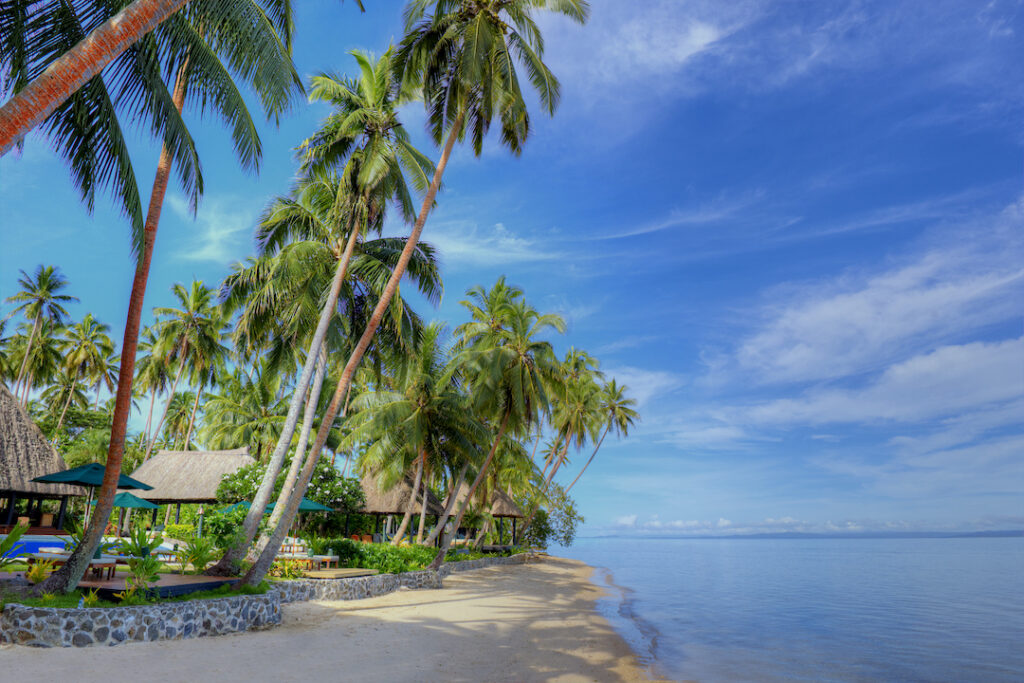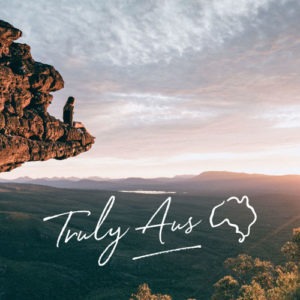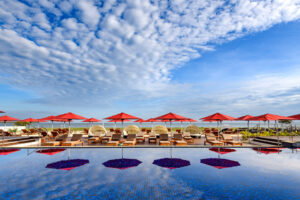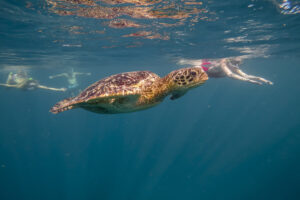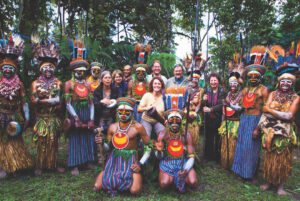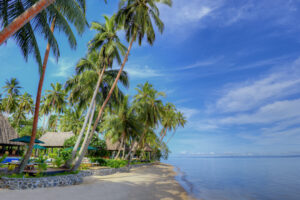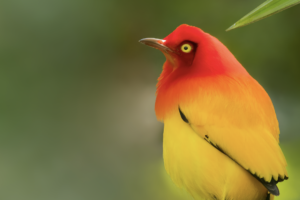Jean-Michel Cousteau Resort is perched on the edge of beautiful Savusavu Bay, on the south coast of Vanua Levu Island. Known as the ‘hidden paradise of Fiji’ it feels far removed from the many other busy tourist hotspots in this remarkable archipelago of 322 islands.
Smooth, verdant fields and fertile agricultural paddocks blend into swathes of unruly layers of tangled jungle – brown thatched rooves peppered across the countryside pop up through emerald and lime-green expanses. Rugged mountains rise up with all of their crags on show, with rivers and streams cutting through them like lines on a map.
In our 19-seater plane, we soar over busy villages – tin rooves and more modern white and steel builds winking in the sun. People scurry about, tiny dots when seen from so far, while chickens, cats and dogs are even tinier blips, going about their days as our shadow swiftly passes like a quickly moving cloud.
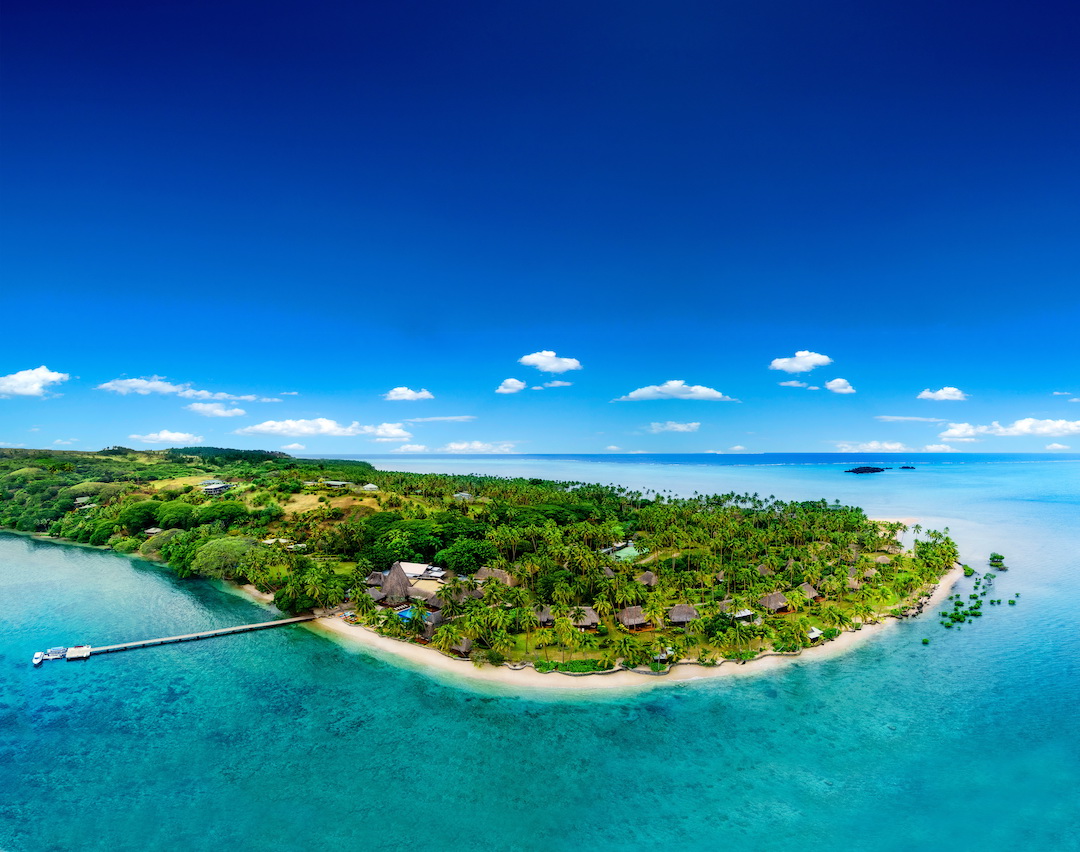
On the one-hour flight from Nadi to Savusavu, peering out the small square window is like having your very own cinematic reel of everyday life in Fiji, on an island famed for its natural beauty, spectacular diving, friendly local hospitality and sustainable, eco-friendly resorts.
Those who are familiar with Fiji will tell you that Savusavu is reminiscent of the more popular tourist areas decades ago. There is a slow country-like pace, and far fewer visitors. Being only 5,538 square kilometres and 180 kilometres long, if you spend a week or even a few days here, you will run into some of the same people.
Bumping along the road on a minibus to Jean-Michel Cousteau Resort, the sea is to your right and the jungle, with intermittent smatterings of houses and sheds, to your left. The road takes you past other eco-friendly retreats, and then, to the cries of ‘Bula!’ the bus swings into the drive of a resort that is rightfully famous – not just for where it sits, but because of who created it, and why.
Jacques-Yves Cousteau was a French naval officer, oceanographer, filmmaker and author. He was the co-inventor of the first successful open-circuit self-contained underwater breathing apparatus (called the Aqua-Lung), which had him producing some of the first-ever underwater documentaries.
Jacque threw his son Jean-Michel – at the ripe old age of seven – into the ocean with the newly invented gear attached to his back, and he’s been exploring the ocean ever since, while championing its protection. He is now an accomplished explorer, environmentalist and film producer, founding the Ocean Futures Society in 1999 in order for ocean pioneering work to continue.
In 1999, paying further homage to his heritage, Jean-Michel became a hotelier, opening the Jean-Michel Cousteau Resort in Savusavu. His father was not a fan of the idea at first, because he felt that the land, the ocean and nature in general, should not be capitalised on, but Jean-Michel’s passion for conservation and determination to show that a commercialised project could also help the world resulted in a resort that paved the way for green tourism and raising awareness of the need to protect our environment.
Today, Jean Michel-Cousteau Resort is a diving mecca, and a place where nature rightfully reigns supreme. Its sustainable roots give it a magical touch, as guests fall in love with the many activities that you can partake in, that are far from cocktails in the sun and shopping.
Saying that, cocktails are also on the menu…
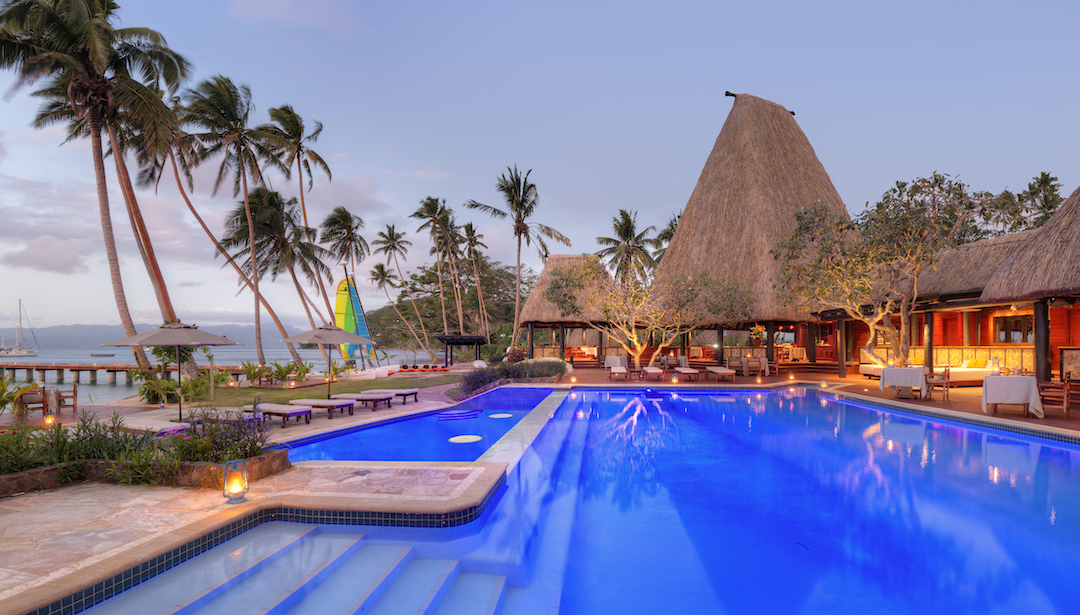
Diving into conservation
In keeping with Jean-Michel’s dream of establishing a resort with an environmentally focussed heart, JMC is Fiji’s only resort with a marine biologist on staff – Johnny Singh – who is there to welcome and educate guests while also helping them to dive into the diverse natural wonders found in and around the resort.
Snorkelling and scuba diving are one of the main drawcards to this spectacular region, and film crews are often in the region. Marine biology takes centres stage in all excursions, so that guests are continually learning about the area, and how to protect it.
Johnny is always working on a new and exciting conservation project, such as species being restored and rehabilitated, and his talks in the restaurant are a great way to learn more about what happens behind the scenes at JMC.
Sweet suites and delicious dining
The main open-air restaurant has an expansive wooden bar and is complete with a dreamy infinity pool overlooking stunning Savusavu Bay. From here, guests step onto pathways gently fanning off into the beautifully maintained gardens where there are 25 luxurious 5-star bures (Fijian for straw hut) hidden amongst immaculately manicured tropical gardens.
The bures look just like huts you might find in a traditional Fijian village, and this is a nod to the culture and traditions of the locals. However, the style and build of the bures are also rooted in conservation – air conditioning is not needed due to the louvered windows that are discreetly screened, and inside, high ceilings with fans keep the air cool and flowing in from the ocean.
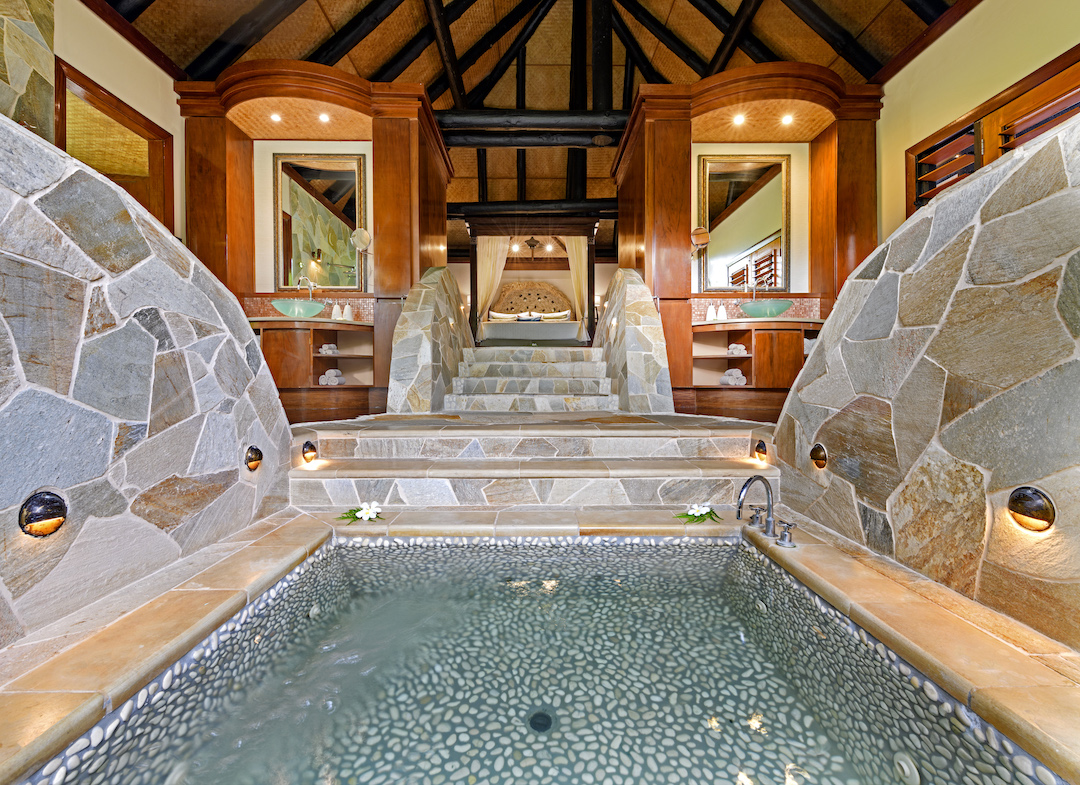
The crème de la creme of the bures is number 25, which is an absolute oasis of Fijian style and breathtakingly ornate architecture. It has hosted many unnamed stars and royalty, and the main room has a mosaic stone staircase leading into a bath fit for a princess, with showers inside and out. The deck with its own pool is nestled next to a private courtyard, and there is a smaller abode with its own bathroom to one side, where children or another couple can sleep in waterfront luxury.
JMC’s restaurant is considered one of the best in Fiji, and dining on the shore of Savusavu Bay is a relaxing, decadent and unique experience. If you want to take things up a notch, reserve a candlelit dinner on the end of the pier. Watch the sun set, and the many fish below you cruising around in the moonlight.
Executive Chef Raymond Lee sources fresh, seasonal ingredients from the local area and across Fiji, and he and other staff grow herbs, fruits, vegetables and edible flowers in the organic garden that can be found at the end of the resort near a magical treehouse for the little ones.
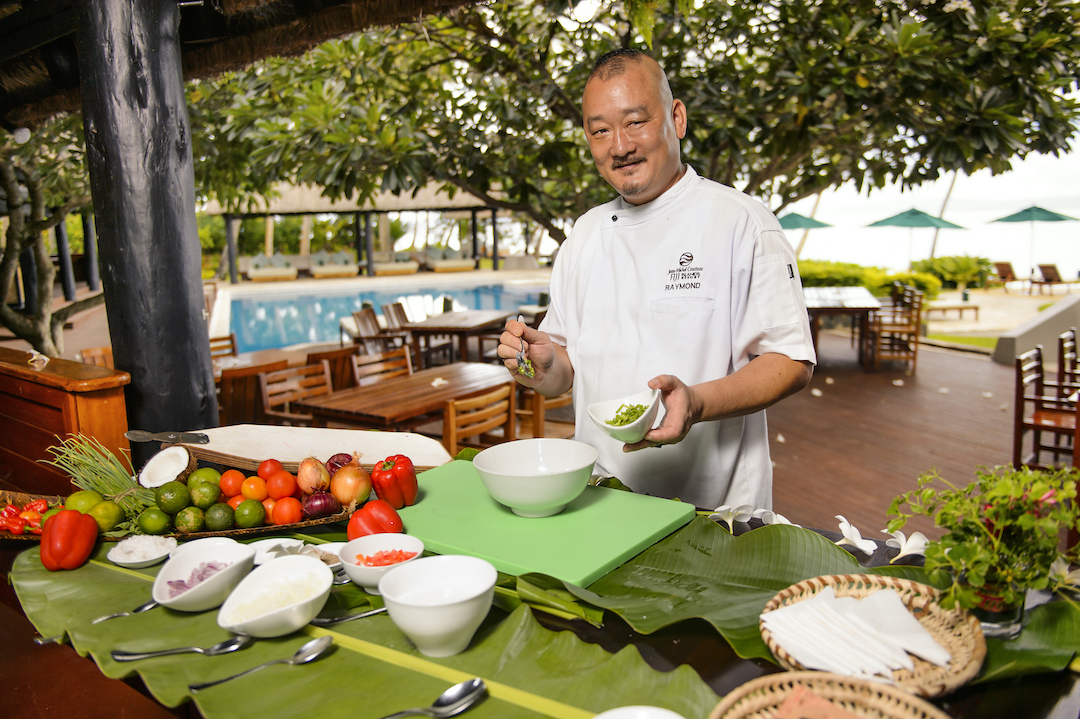
Lee’s dishes are classically Fijian, but as he has Asian heritage and has travelled a lot to explore many other cuisines of the world, there are many delicious twists on Fijian favourites to indulge in.
Every week, the resort hosts an awesome Fijian ‘Lovo’ feast, which you don’t want to miss. The delicacies are prepared in a fire pit with hot embers, and everything is covered with banana leaves. This slow-cooking method is key to the tenderness of traditional dishes, and it has been a staple for family cooking for centuries.
After a meal, guests can linger and enjoy a cool drink with the calming lull of Fijian musicians playing mandolins, ukuleles and guitars sweeping over them – their soulful voices bringing folk songs of warriors, love, friendship and family to life.
With the waves gently lapping at the shore, the scent of Fijian dishes drifting from the kitchen, and the smiling faces of the JMC Fijian family surrounding you like a group hug, at Jean-Michel Cousteau Resort, you’ll feel the breath of the ocean on your face, and the serenity of Savusavu in your heart.
To read about some of the best restaurants in Fiji, click here.

